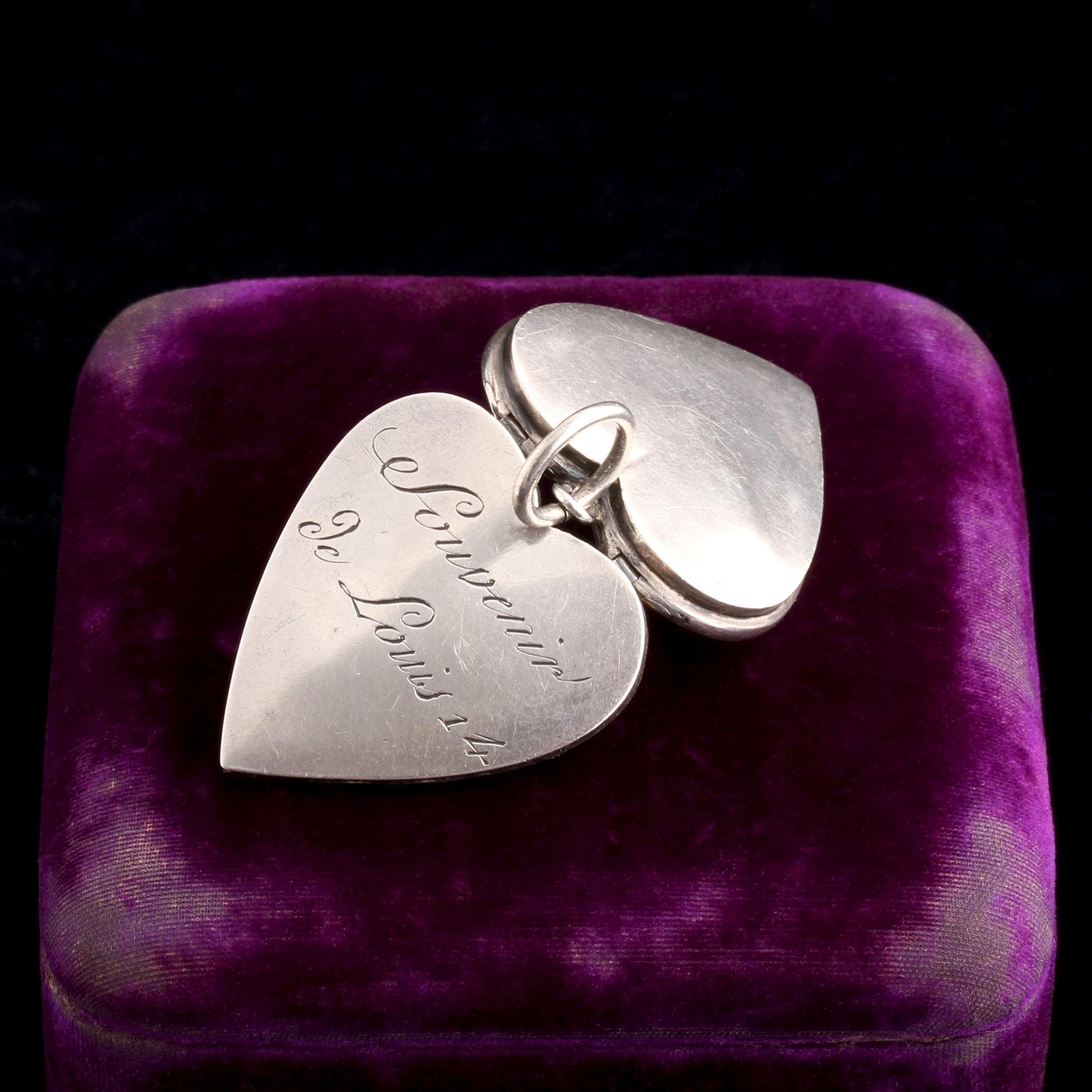This heart locket says "Souvenir de Louis 14" - that's the famous Sun King who built Versailles. At first glance, I imagined it was owned by a French person loyal to the monarchy. But inside, the dedication is for 1793. That year was NOT a good one for Louis 14th's grandson - he was executed for treason, and his wife Marie Antoinette lost her head soon after. So my theory that this was a political jewel was strengthened - I imagine that during the French Revolution, French people took sides of either the rebels or the fallen monarchy, and the owner of this jewel supported the crown (perhaps quietly.) But the mysteries continue. Inside, an engraving says "Coeur de Louis 14 Pris au Val de Grace an 1793". I think this translates to "Heart of Louis 14 taken at Val de Grace in 1793". Val de Grace was a Roman Catholic church in Paris founded by Louis 14's mother to celebrate her son's birth. But in our fateful year, 1793, the Benedictines were forced out of the church and it was turned into a military hospital.
So what was being commemorated with this locket? What do you think? Did it belong to one of the fleeing monks? A military family? A rebel fighter? WHAT?????
Here's another twist: a very old faded piece of paper was cut to fit inside. In ink, we can read "This relic was eaten by J? Backland when shown it at church" (or it could say "lunch", we can't make it out.) Was there a relic inside the locket? Hair? Bone? WHAT DID J BACKLAND EAT?
thedetails
- Materials
silver, paper
- Age
dated 1793
- Condition
Very good
- Size
1 7/8" length including the bale, 1 1/2 x 1/3/8" heart
Need more photos?
Send us an email to request photos of this piece on a model.

Aboutthe
GeorgianEra
1714 — 1837
As imperialist war raged in the Americas, Caribbean, Australia, and beyond, the jewelry industry benefited: colored gems from all over the empire became newly available. A mix of artistic influences from around Europe contributed to the feminine, glittering jewels of the era. Dense, ornate Baroque motifs from Italy showed up in Georgian jewelry, as did French Rococo’s undulating flora and fauna. Neoclassical style made use of Greek and Roman motifs, which were newly popular due to the recently uncovered ruins of Pompeii and Herculaneum. Lapidary methods improved: the dome-shaped rose cut was popular, as was the “old mine cut,” a very early iteration of today’s round brilliant cut.
The boat-shaped marquise diamond cut was developed around this time, supposedly to imitate the smile of Louis XV’s mistress, the marquise de Pompadour. Paste — an imitation gemstone made from leaded glass — was newly developed in the 18th century, and set into jewelry with the same creativity and care as its more precious counterparts. Real and imitation gems were almost always set in closed-backed settings, lined on the underside with thin sheets of foil to enhance the color of the stone and highlight it's sparkle. This makes Georgian rings tough for modern women to wear, especially on an everyday basis: genteel, jewelry-owning ladies of the 18th century were not famous for working with their hands like we are. Nor did they wash their hands as much as we do. Water will virtually ruin a foiled setting, so take special care with your Georgian ring. Very little jewelry from this period is still in circulation, and it's very difficult to repair.
please note:Terms of Sale
Antiques can be returned unworn and in original condition within 10 days of delivery for an exchange or refund minus the cost of shipping. Once a piece has been altered, including ring re-sizing, it is FINAL SALE.






